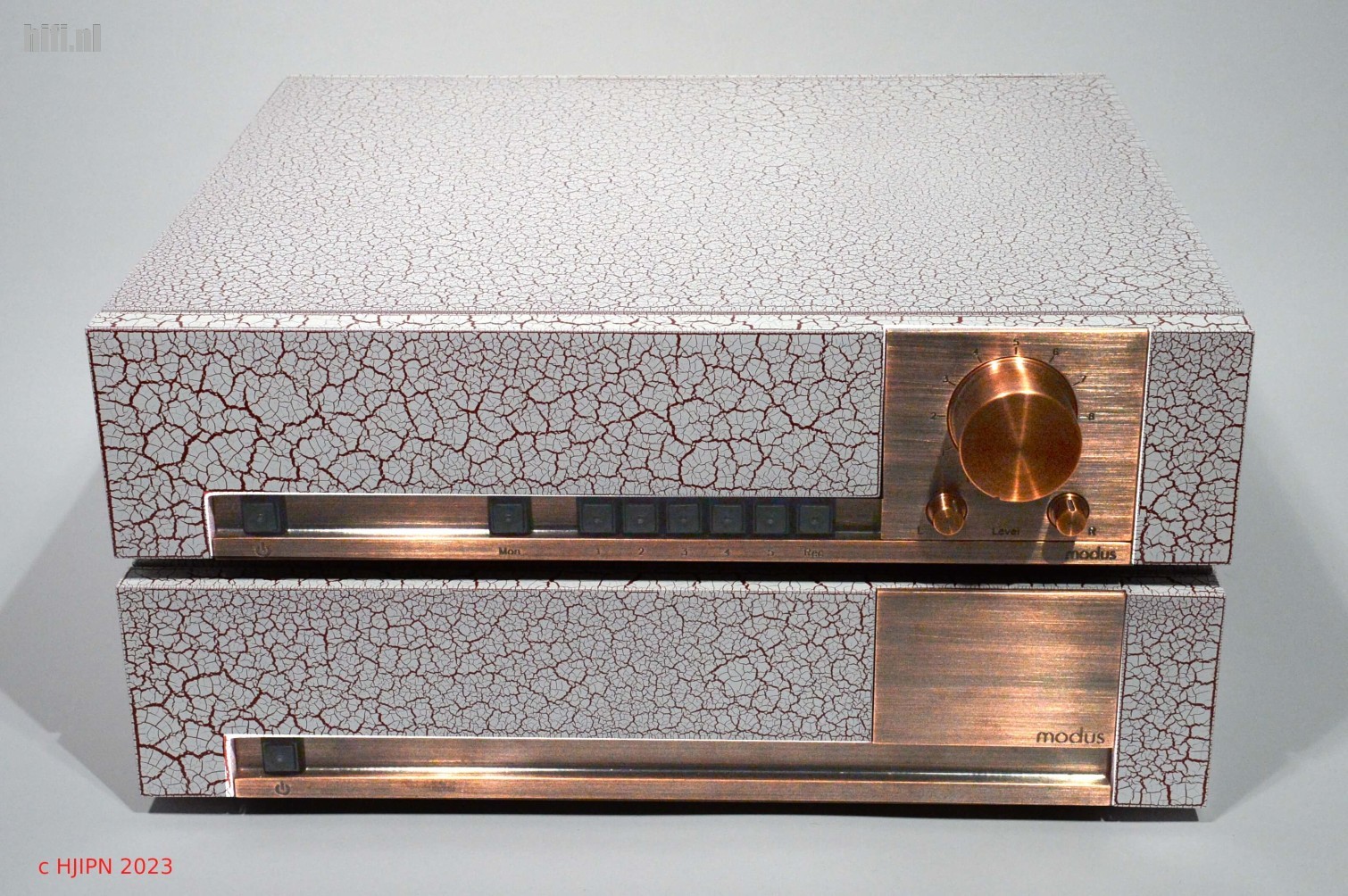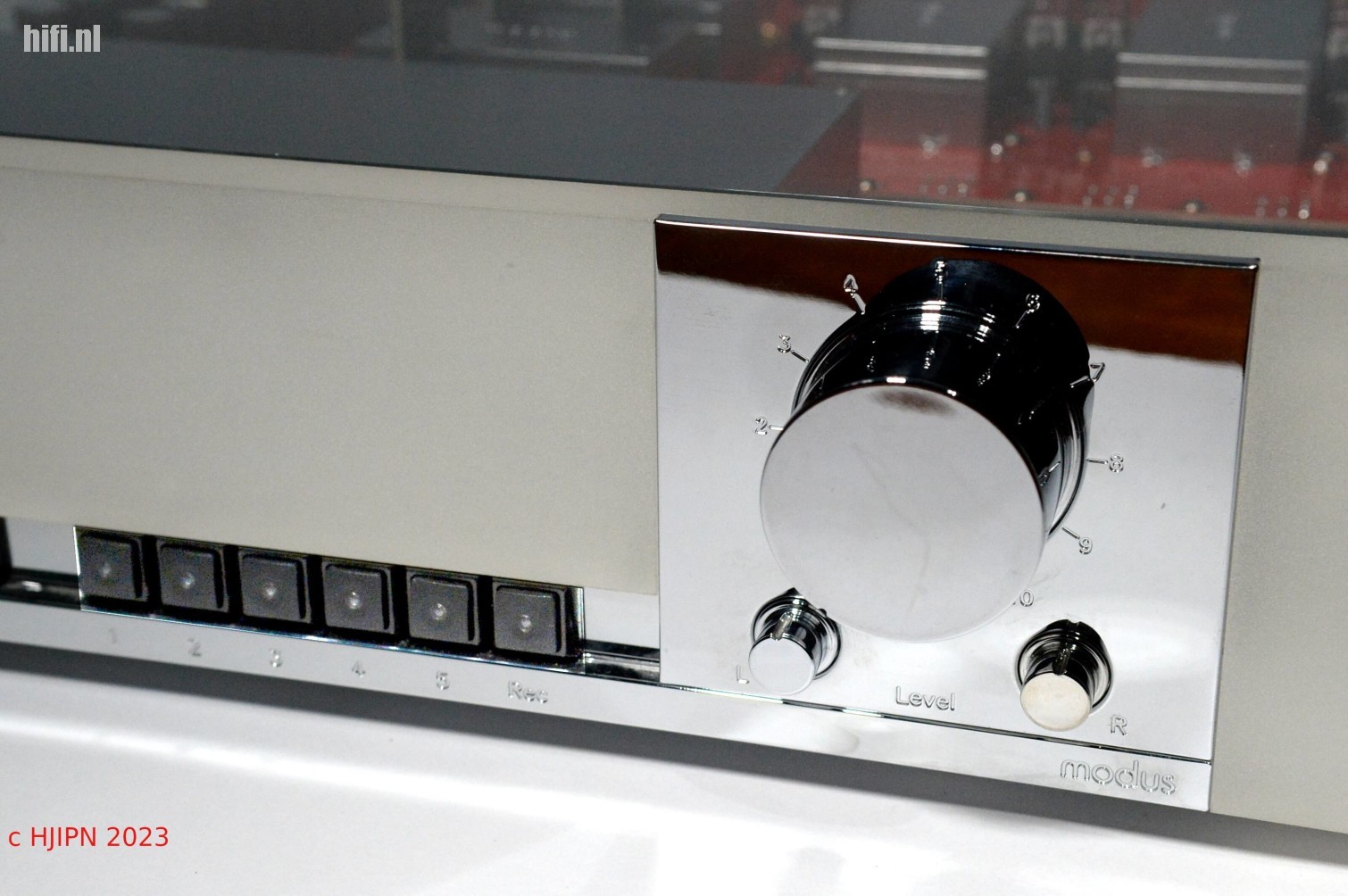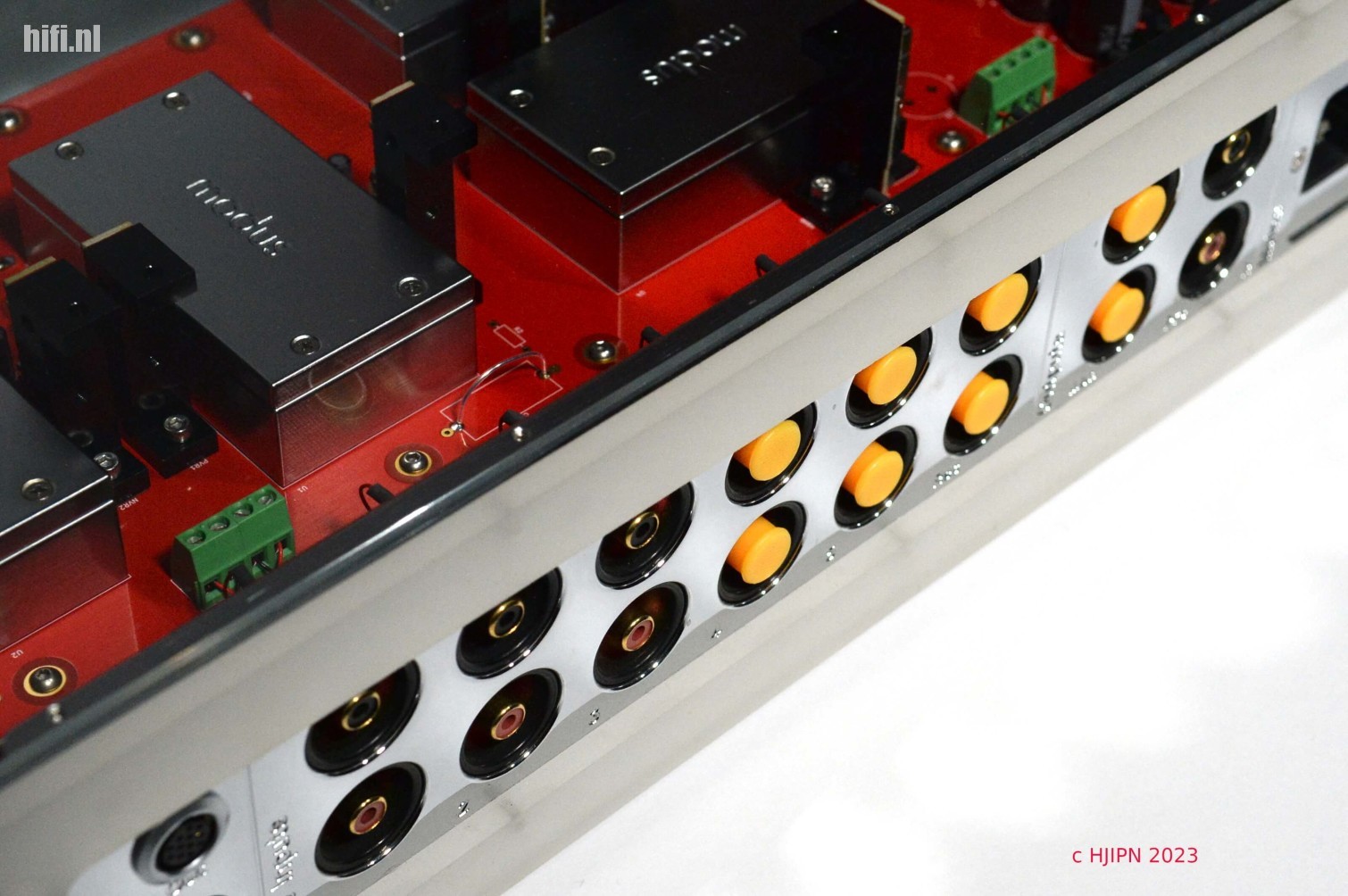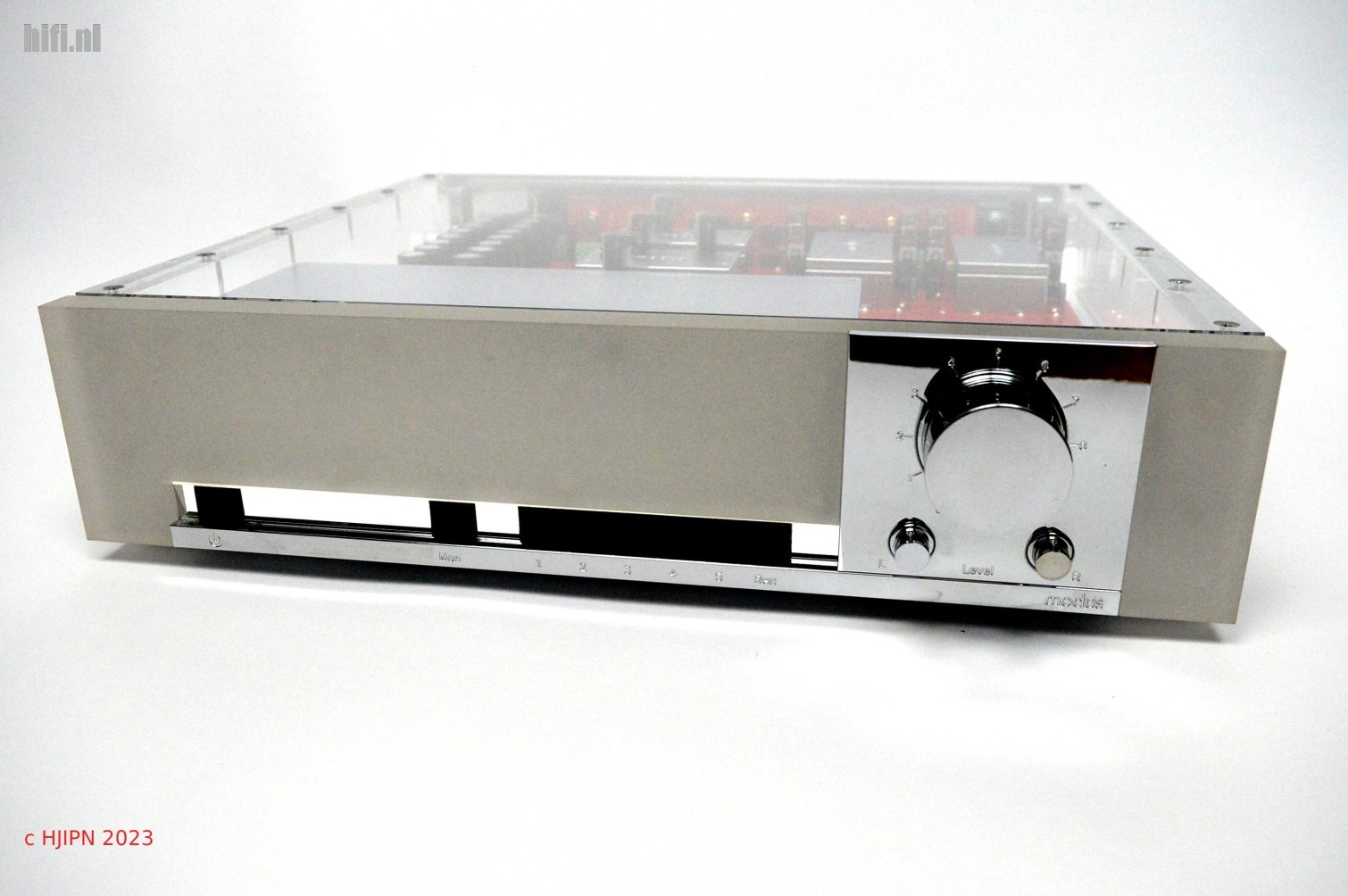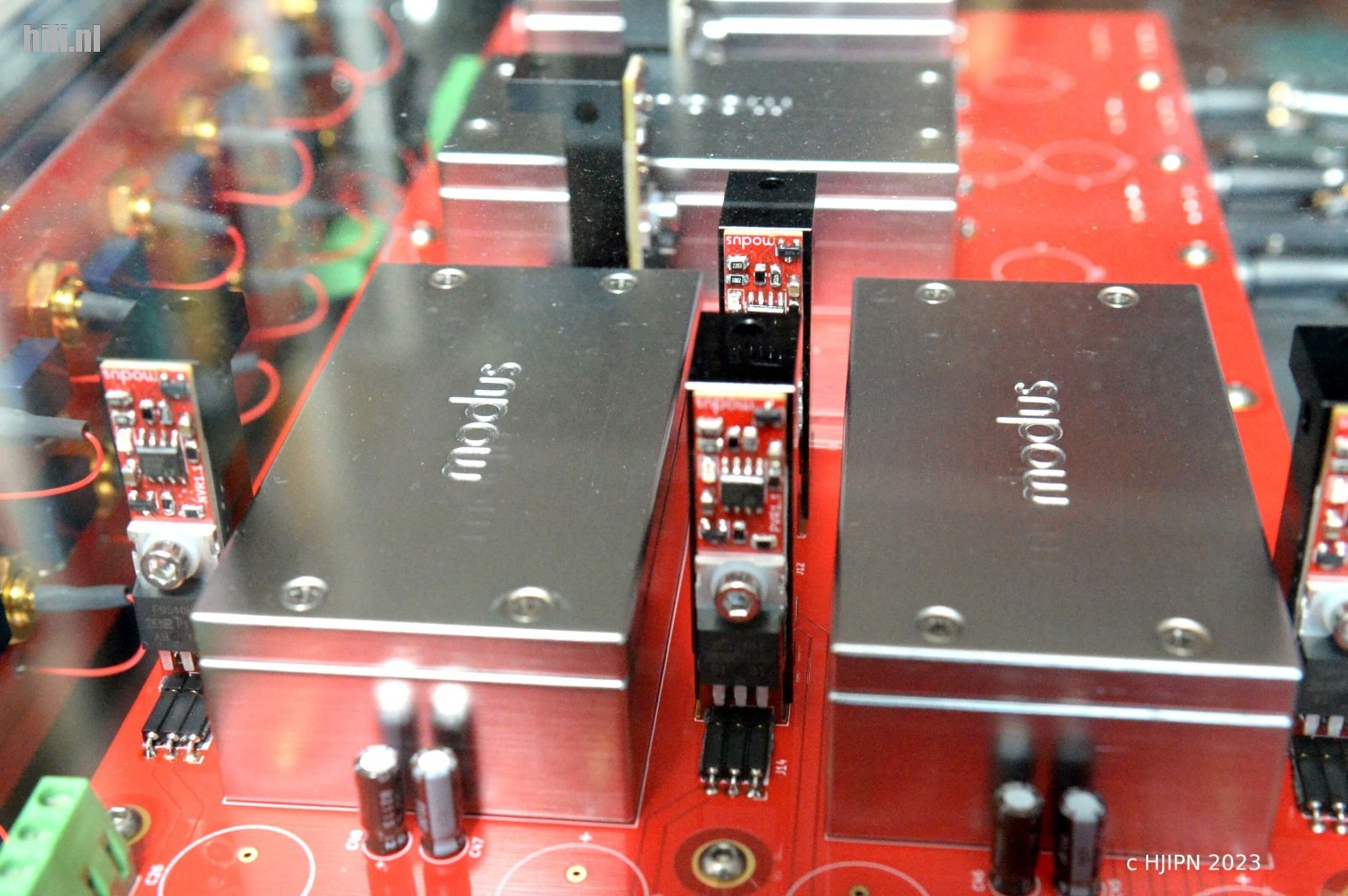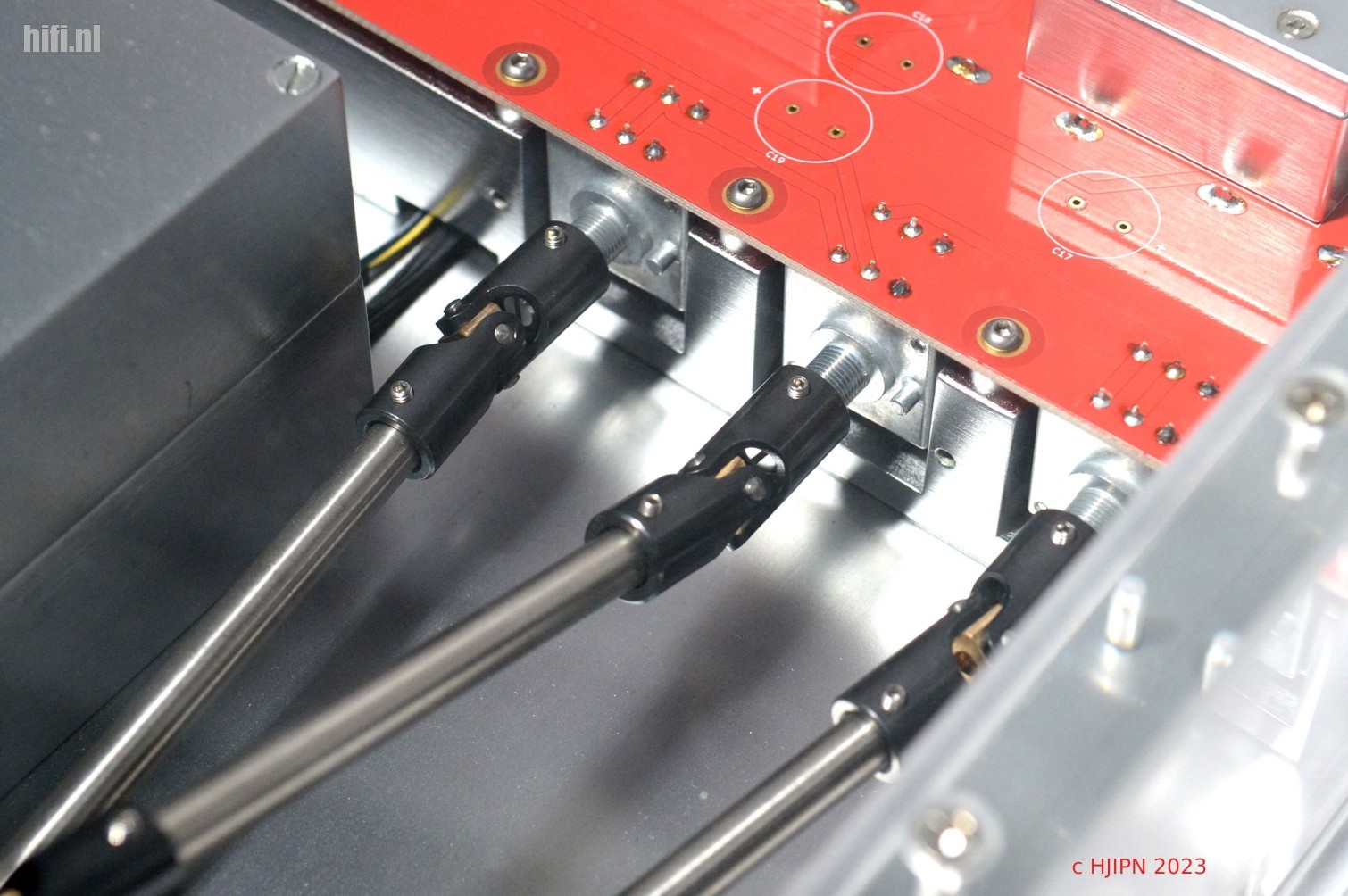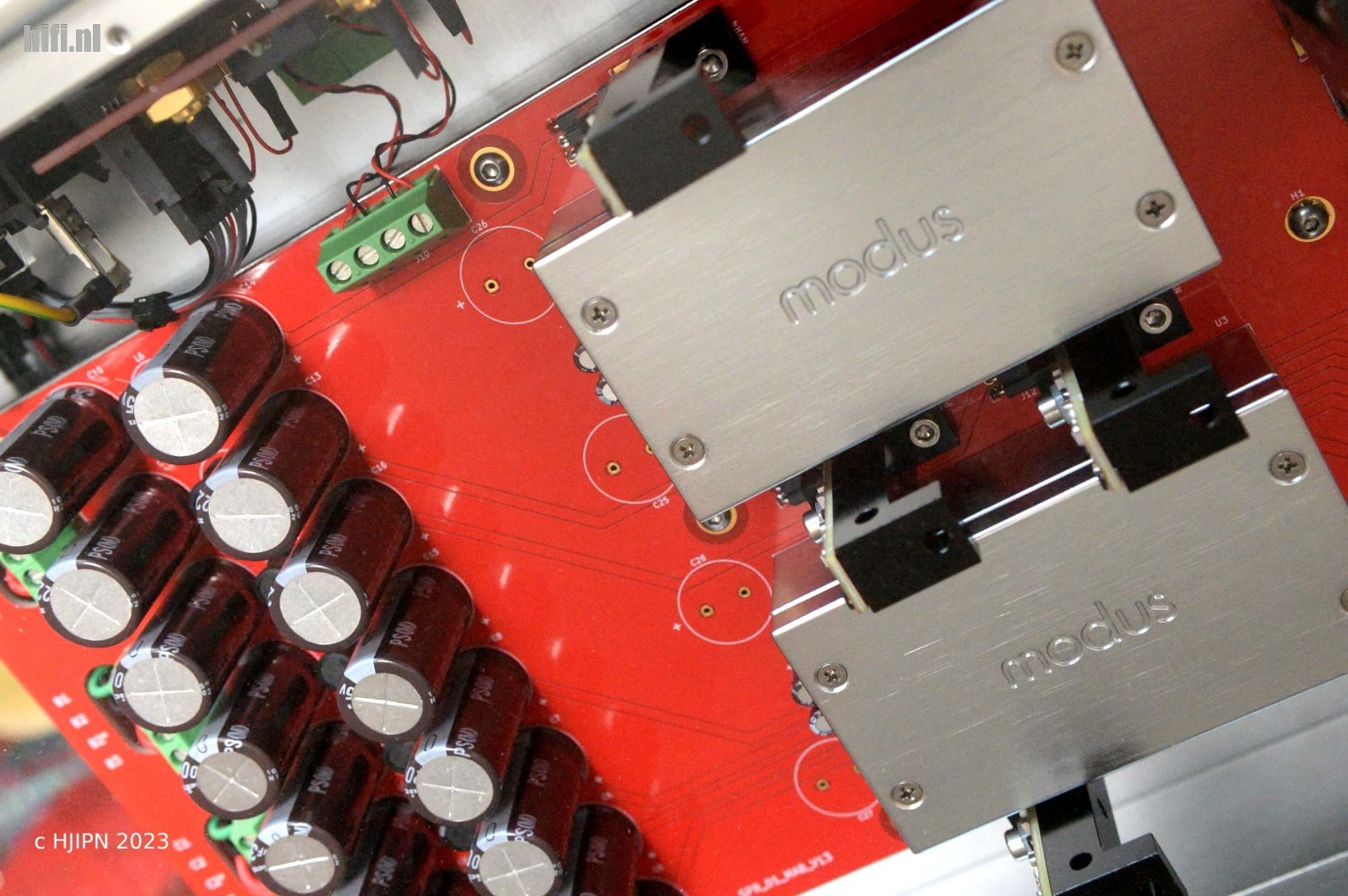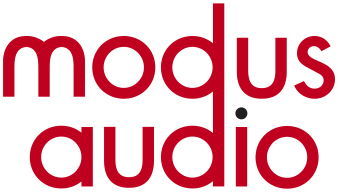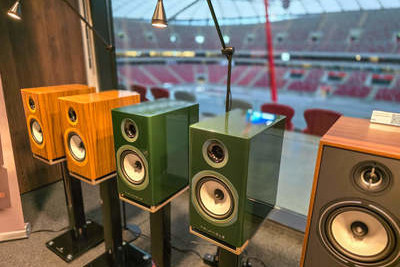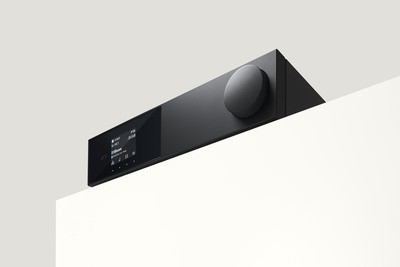The communication screen in the car lights up. Thunderbird V seeks contact... In this case, a small beep indicating an incoming mail. The sender is PUUR hifidelity in Zeist, The Netherlands. This makes you curious, as the gentlemen there, have ears on their heads and will not make a fuss if a product is not worthwhile. Despite a modest pace with a needle that touches well over the speed limit in the Netherlands, you're not going to read messages on a dashboard display on ‘die Autobahn’. So just wait for the next ‘Baustelle, Ausfahrt or Raststätte’. Once that Max Verstappen feeling has subsided, a request is read about reviewing an amplifier set. | Voor Nederlands, klik hier
Review Modus Audio: looking for the right sound Modus
The content of the message is remarkable. It concerns a new manufacturer from the south of the Netherlands. A decade's worth of work has gone into a combination of a pre- and power amplifier set. It promises flawless playback with a live 3D presentation, and the brief description of the company's workshop and the technical angle suggests that this is not a bunch of hobbyists cobbling together a few units on a Sunday afternoon.
Further communication then reveals that the bar is set very high. The set requires an investment of some € 60,000.00, but with inflation expected to decline, this should not be a problem. Much more exciting is the question why, in today's saturated market, someone still wants to show up with equipment of a very high level of ambition.
In your author's experience, the best amplifiers were made between 1940 and 1987, with occasional exceptions for the later years. There hasn't been much new under the sun for a long time, so there seems to be a technical limit to amplifier development. How far can you go with tubes or solid state? There is a lot of development in marketing, though. Amplifier circuits that we have known for decades, but in a new jacket with a new story.
On the other hand, there are still some brilliant minds who do indeed come up with new insights. If someone is capable of doing that, you might wonder whether you should then apply that talent in audio. The world has bigger fish to fry, than improving playback for a limited group of audiophiles and truly critical music lovers. In any case, this is an emotionally charged request. The prospect of lifelike reproduction always gets your author out of bed.
Modus Audio
Modus Audio is backed by a large and wealthy company that has nothing to do with audio. Many years of research have gone into the development of the pre- and power amplifiers and, according to the owners, this is an investment that can hardly be recouped. The counter therefore starts at zero the moment products are sold. So why an audio product? Well, out of passion for audio and curiosity for better reproduction. Just like Soulution and the Dutch company Veddan. These also arose from wealthy companies with no relation to audio.
What emerges during the introduction is the enormous professionalism. Investments were made in pick-and-place machines, CNC lathes and milling machines, reflow ovens and other necessities. Many a Japanese artisan in audio has to do with less.
Not all parts are manufactured in-house. This includes housings with very specific surface treatments. Anyone who has ever been involved in having mechanical parts or surface treatments made, realises that it is very difficult to find companies, that can do it at a certain level or even understand what it is all about.
Yours truly knows that making a certain part for ASML's machines is entrusted only to a single company and a single person with super skills. Such a part is the size of two sugar cubes, has a precision of 0.01mm and costs a fortune. In the Modus Audio preamplifier, the action of the volume control, amongst others, is transferred to a potentiometer via a metal axle. The movement from the knob has to be transmitted via universal joints. But, with zero tolerance. Hell of a job, then, to build that cross-coupling.
The amplifiers' electronics are in small sealed modules and slightly larger sealed compartments. These are coated on the inside with a layer of copper for RFI/EMI shielding, and on top of that a layer to prevent oxidation. Again, a huge search to find a manufacturer who could do this to strict specifications.
Then, of course, the existential question of whether it is possible to build a better amplifier. Indeed, from the philosophical framework, such a thing gives meaning to existence. The conversation features Frans Kovacs and Richard Boumans. Richard is the technical man and Mathijs Mennen the third partner. Without revealing all the trade secrets, the amplifiers consist of three parts. According to Richard, this appears to yield the best results. The input circuit provides high input impedance and voltage gain. Then an intermediate circuit and the output stage provides current and low output impedance.
The increase in quality of this setup is partly due to a critical selection of components and because the different parts of the circuit have their own power supplies with their own transformers.
Much has been done to counteract the influence of interference (RFI and EMI). That architecture is recognisable, as Angstrom Audiolab's products are also built that way, with corresponding results. Obviously, such a solution is very costly and also adds to the weight of these devices. You hardly see such an engineering solution with the mass manufacturers, where all entire electronics are driven by a single transformer with a simple rectifier and smoothing. But, Richard and your author agree that meticulous attention to power supply and noise suppression is indeed the way to build a better amplifier. The applied circuits consist of discrete operational amplifiers that are kept as simple as possible, but also no less than that.
Modus Audio's extremely appealing premise is that an amplifier should be a completely transparent conduit for the signal. So, listen to the original. Now let that strongly capture your author's imagination.
Products
The cabinet of the preamplifier and power amplifier is made of wood and can be finished to the customer's specifications. Luxury veneers, a gold-plated finish or other options are all available. Yours truly was impressed with the high gloss Italian Coromandel veneer. The pinnacle of decadent luxury and extremely chic. In addition to the 'production' version of the preamplifier, there is also a 'show' version here in the listening room, made of transparent, milky-white acrylic. Not only does it steal the show, but the visible 'internals' reveal a level of engineering that beats almost anything else on the market. Rarely have I seen anything so beautiful.
It belongs in the MOMA (Museum Of Modern Art) and, of course, here in the listening room. Yours truly is up to some serious self-reflection with the question of whether the old Kenwood set from the listening room should be retained. All current and future Modus equipment is prepared to be linked through home automation. The factory can remotely diagnose, update software in the near future and central control is also possible. There are also smart techniques on board to control resonances.
The SPR01 preamp is built symmetrically with discrete FETs and bipolar transistors. The wide bandwidth makes the phase behaviour linear. There are four power supply circuits with four transformers. That package contributes to the realistic sound and 3D feel this preamp is capable of, Modus says. The device weighs 25 kilos and has six inputs. The construction to make the device resonance-free in several different parts is very cleverly conceived.
The SPA01 power amplifier delivers 60Watts/channel at 8?. At 4? it is 120Watts and at 2? it again doubles. Underlying this are two huge 500VA transformers that ensure stability, the 34kg weight and output power.
Supplemented by 88000uF capacitance. It is a DC coupled design with MOSFETs. There is no DC offset compensation, which reduces distortion. In the signal path, there is only a single capacitor. Capacitors always affect the sound, so you don't want them. The huge bandwidth makes the frequency response within the audio range 0.1dB linear.
Listening
With a set like this in the listening room, your confidence rises like a rocket, but do you really enter a new listening modus? The amplifiers were connected to a set of extremely discriminating loudspeakers. The required cables were selected based on measurements in order to find the right match. Frankly, there is no impression here that the Modus amps are very sensitive to cables. Otherwise, the usual tuning.
The set was first fully built up based only on test signals and measurements. The power amplifier needs at least an hour to reach operating temperature, Richard tipped. A day later, the (balanced) power to the whole system was activated and another test track started. These are specific measurement signals that can be used to check speaker placement, cable influence and other characteristics. So another double-check compared to the previous day. Then immediately followed by a piece of music.
It was funny to note that the soundstage, during the warm-up time of the electronics, became noticeably wider, up to about 6 metres in the end. Songbird by Eva Cassidy starts with little touches on some percussion instrument. The soundstage was so good that those sounds literally sounded right and left next to the listening position. Realism in the reproduction also revealed itself within a minute of listening.
But, after an hour, the serious listening began. So, with music. Within a minute, your author was flabbergasted, which is actually still an understatement. You then hear ten things at once, but at such a high level, as only the very best systems in the world present. Then you are talking about a solid state set. But things are happening that yours truly only knows from the Japanese Kondo G-1000 with the Kagura mono-blocks.
The extent to which this Modus set can operate subtly and micro-dynamically is unprecedented. And it does so with a level of detail and definition that provides whole new insights into the source material. At least as good as with a 300b amplifier, but actually much better. Indeed, behind those subtle tones is palpable power. All placed within an inky black background. The (macro) dynamics are phenomenal. Brass and percussion come in with the intention of demolishing building structures. Lifelike. The lower region also has tremendous definition.
What is particularly striking is the enormous control the power amp has over the (critical) speakers. It seems like a lot of energy goes into the bass, making it perfectly in balance with the rest of the spectrum. Even when playing at whispering level, the whole stage is perceptible, but still the bass is also perceptible in the right ratio. The loudspeakers have an 'issue' with the bass to the extent that if the amplifier does not output and control it properly, it is immediately noticeable.
The Modus set is neutral. But, by no means at all cold and worn out. That neutrality arises partly from the direct signal paths. There are no capacitors, so a major cause for colouration and 'sounds' is absent. But, there is a set here that can communicate the warmth and ambience from the recording (if any) in an unprecedented way.
A harmonically rich midrange. Voices sound great. But this is also valid for the low and high range. The amps are lightning fast. The treble is natural. Like real live musical instruments, never mellow and tending towards unnatural warmth. The set comes very close to straight wire with amplification. Nothing disappears and nothing is added. As a listener, you have a direct link to the live event. Very importantly, the set has tremendous 'flow'.
The features listed above can all be provided with snippets of music and commentary on what the Modus electronics are doing with them. But, words are not enough to pinpoint very precisely what is happening here. As a listener, you just have to experience it and admit that you have probably rarely experienced reproduction at this level. The perfection with which the source material is reproduced is astonishing. You could also argue that while the quality of our sources is actually very good, but some audio systems actually make a mess of it.
With the Modus set, you literally rediscover your music collection. There have been days and nights of listening here with amazement, but also with intense pleasure. Such a set is unfortunately not for the modal music lover and for your author, but the experience gained can last for years and it also increases your frame of reference.
It illustrates what you can achieve if you forget about investors and accountants (who want to cut costs and maximise profits), but just start designing and building a cost-is-no-object amplifier set from technical knowledge and experience. So there is still hope in this world. Well, we sincerely hope that during demonstrations of this set, you will experience the same as here in the listening room. End of text, because there is still a pile of vinyl waiting to be listened to on this level.
Statement
The architecture Modus uses to build amplifiers is actually quite recognisable. In the past, there have been amplifiers from companies such as Krell and Sony that are widely regarded (by people who really know) as the best ever made. If you analyse and also listen to those amplifiers, you will recognise a lot of the technology that has also been used in the Modus products. So the world does know, but in the race to maximise profits and efficiency, many audio products have been eroded and are only a shadow of the quality we often used to have.
Epilogue
Attentive music lovers have already been introduced to Modus Audio during the DAE (Dutch Audio Event) last year 2022. You may have had a positive experience here as well.
Yours truly is regularly involved with start-ups in the audio world. The problem is often that these products do not add anything to what is already available. Cable manufacturer X is going to try it too, without raising the bar. How can you build a brand without adding value and without being extraordinary? Mostly by exorbitant marketing campaigns, but that is priceless. One secret is to really come up with something new. Just think of Magico. They are revolutionary in terms of technology and sound.
Modus is clearly coming up with a new level of performance. The market in the Netherlands is probably just too small for this. There are serious opportunities for Modus if the right strategy is followed. The target market is real music lovers in Germany and the Benelux, but especially in the Far East. Think of the emerging markets in Vietnam. And, of course Japan, the largest audiophile and music market in the world. In my experience, consumers in the US will also be charmed by these amplifiers. If you come to Munich with these products and you provide a brilliant demo, it would be strange if the products were not picked up by the visitors.
Modus Audio can be heard at PUUR hifidelity in Zeist, The Netherlands on 3 and 4 February 2023. Audiofrenzy is the dealer in Maastricht, The Netherlands. More info: www.modusaudio.com.
Modus Audio
SPR01 preamplifier € 26,500.00 incl. VAT
SPA01 power amplifier € 29,500.00 incl. VAT


